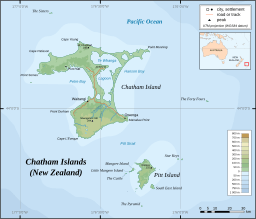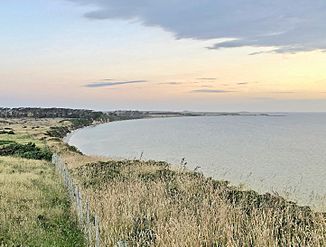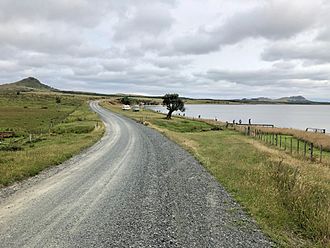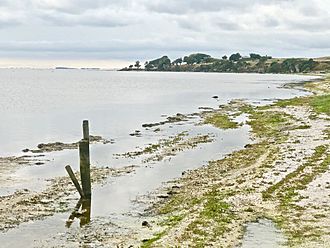Te Whanga Lagoon facts for kids
Quick facts for kids Te Whanga Lagoon |
|
|---|---|
 |
|
| Location | Chatham Island |
| Coordinates | 43°52′S 176°28′W / 43.867°S 176.467°W |
| Basin countries | New Zealand |
| Surface area | 150 square kilometres (58 sq mi) |
Te Whanga Lagoon is a huge body of water that is the most important natural feature on Chatham Island. This island is located in the South Pacific Ocean, far off the east coast of New Zealand. Te Whanga Lagoon covers a massive area of about 160 square kilometers (that's about 62 square miles!).
Contents
What is Te Whanga Lagoon?
Te Whanga Lagoon is a large, shallow body of water. It's fed by several small rivers that flow down from the hilly southern part of Chatham Island. The lagoon's water then flows out into the Pacific Ocean through openings in Hanson Bay, which is on the eastern side of the island.
Fossil Finds in the Lagoon
One of the coolest things about Te Whanga Lagoon is what you can find along its edges! Many fossilized shark teeth can be collected there. Imagine finding a tooth from a shark that lived a very long time ago!
How the Lagoon Changes
Over a long time, the lagoon is slowly filling up with sediment, like mud and sand. This process is called "silting up." It means that eventually, the lagoon might become shallower or even turn into dry land.
When a scientist named Dr. E. Dieffenbach first described the lagoon in 1841, it was only a little bit salty (we call this brackish water). It was separated from the sea by a low sand bar and was about 60 centimeters (2 feet) higher than the ocean at high tide.
Images for kids






